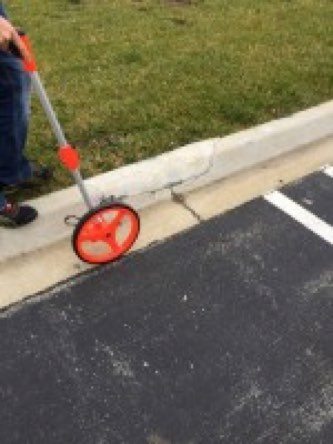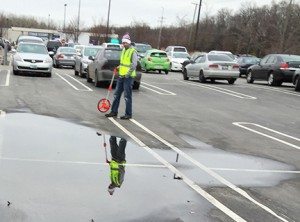

Treat Your Restaurant Parking Lots to Pavement Assessments

The most fundamental way to optimize your restaurant pavement maintenance budget is by assessing the condition of pavement in your portfolio. Pavement assessments compile the most powerful information pertaining to your parking lots in one easy-to-read report.
What is a pavement assessment?
Restaurant parking lots are aging, but budgets are not growing. Pavement assessments are reports that help restaurant facility managers, especially those working in a decentralized facilities department, implement proactive strategies for pavement maintenance, which saves time, money, and extends pavement usability.
A best-in-class pavement assessment starts with a visual inspection to document the overall condition of the pavement such as surface distress, ride quality, and aesthetics. The data collected will help identify repair and replacement needs, prioritize repairs on a site or set of sites, and create budgets for planning up to five years ahead.
Key components of an assessment:
All pavement assessments need to follow a rating system to explain the relative condition or quality of pavement assets in your portfolio. This provides a quick view of the condition of your properties and helps summarize the findings to share with superiors and stakeholders. A widely used system is the Pavement Condition Index (or PCI). The PCI was developed by the US Army Corps of Engineers and adopted by ASTM (American Society for Testing and Materials). It is a numerical indicator that rates the condition of pavement.
Once properties are assigned a rating, they can be ranked or prioritized according to condition and repair needs. Next, budgets can be created based on timing of maintenance and the cost of procedures. In fact, one of the main components of a basic assessment is a capital expenditure plan, based on standard degradation over time and current conditions. This plan helps restaurant facility managers better manage schedules and spending from month-to-month.
Advanced assessments provide more detail to help impact decision making in both the long and short term. Advanced reports should come with detailed scopes of work covering recommendations and budget projections for the next five years as well as repair maps including photos of damaged areas. The scope of work document covering recommendations for the first year can be sent directly to contractors so that all bids can be compared on an apples-to-apples basis.
When to perform assessments:
It is recommended to perform pavement assessments every 2-4 years, depending on the condition of the property. Properties that have been recently repaved and/or are following preventative maintenance practices may be able to go a little longer in between assessments; however, sites in average to poor condition may need to be refreshed sooner. In either case, developing a cadence for performing assessments allows you to keep the data fresh and update budgets accordingly. It also provides data points to see how much the property has degraded since the last assessment.
Selecting a vendor:
Let’s Pave specializes in pavement assessments. This ensures your interests are the main focus and there are no conflicts of interest. The result is always an objective recommendation and effective outcome for you to confidently plan, bid, and execute the work. Our plans range from basic (for restaurants with a few sites) to advanced (covering an entire portfolio), and we can also make recommendations for future enhancements.



